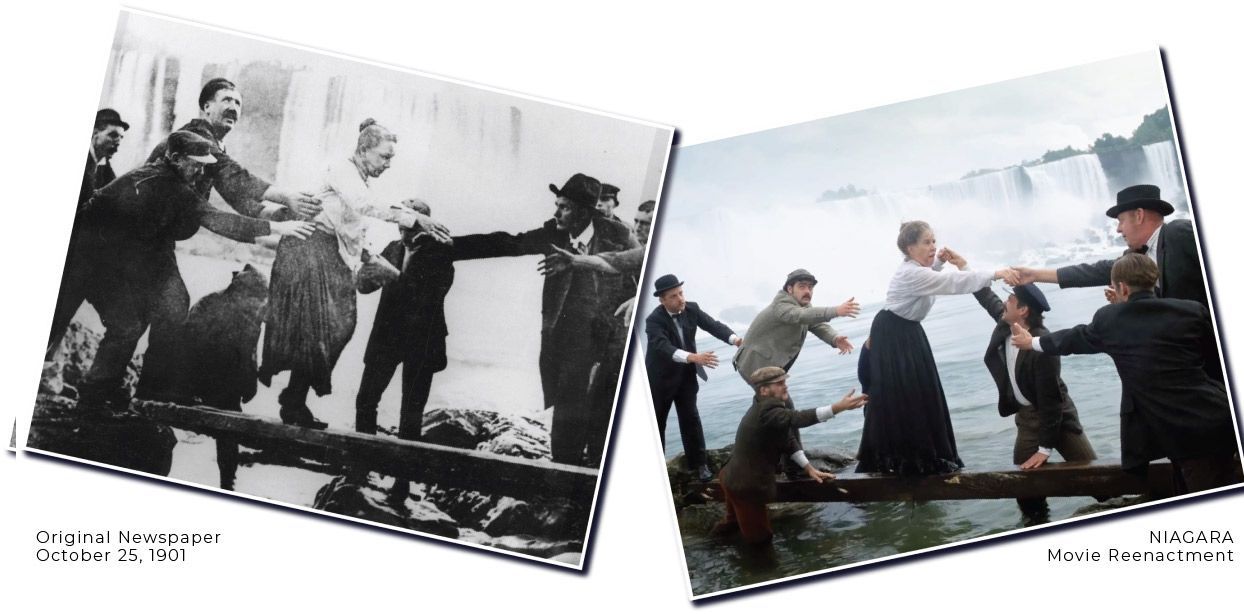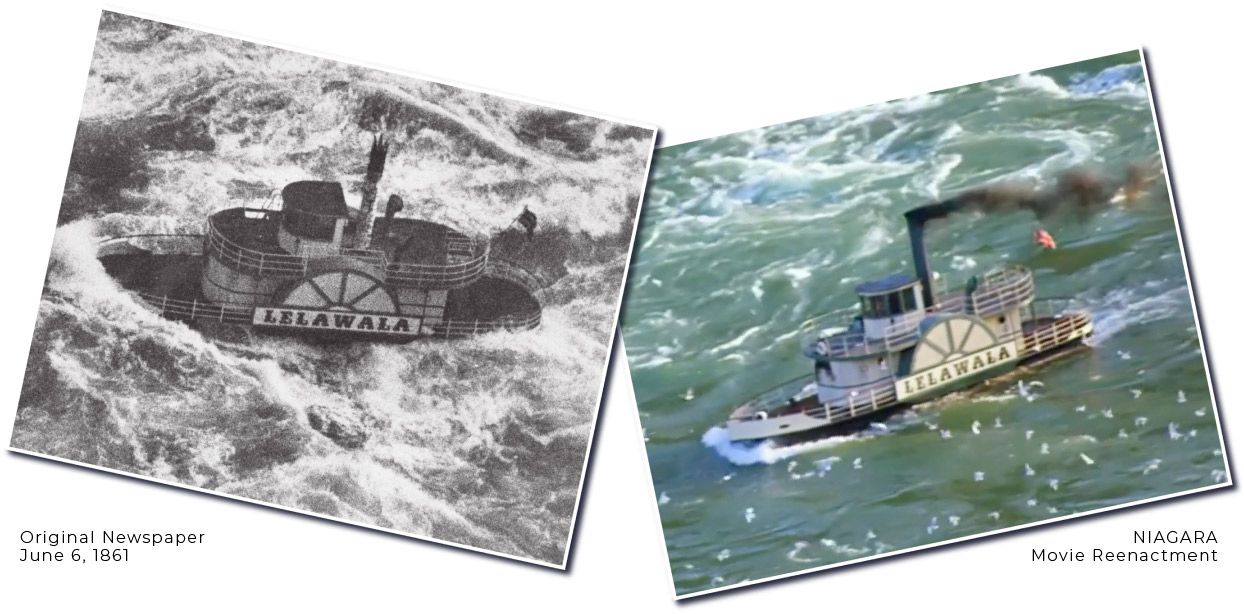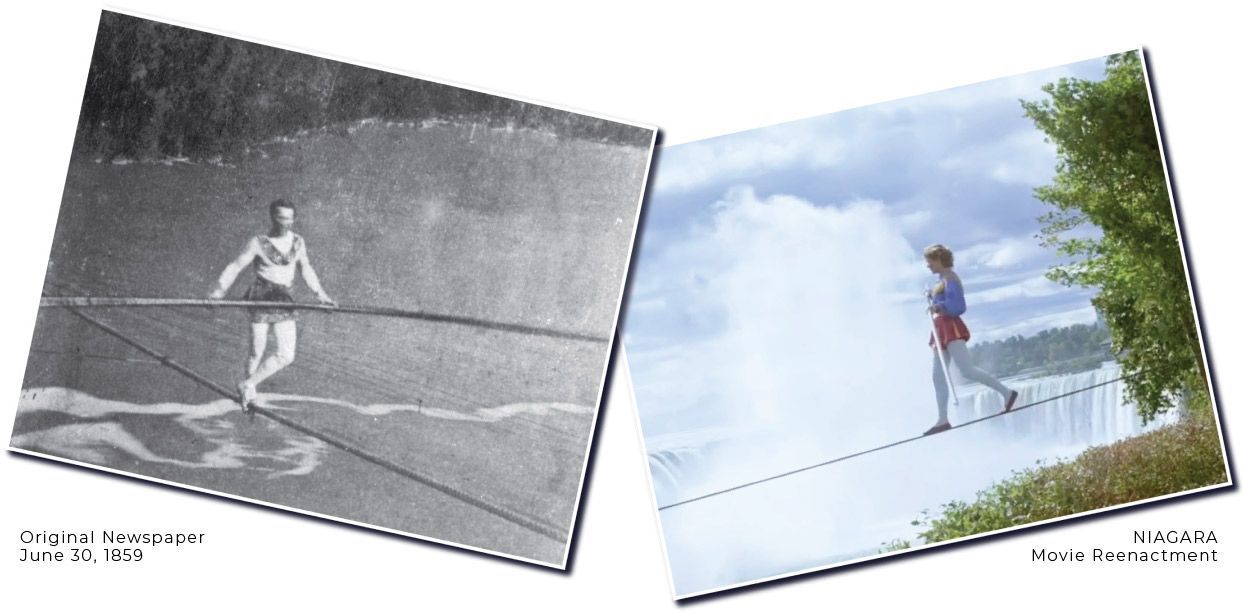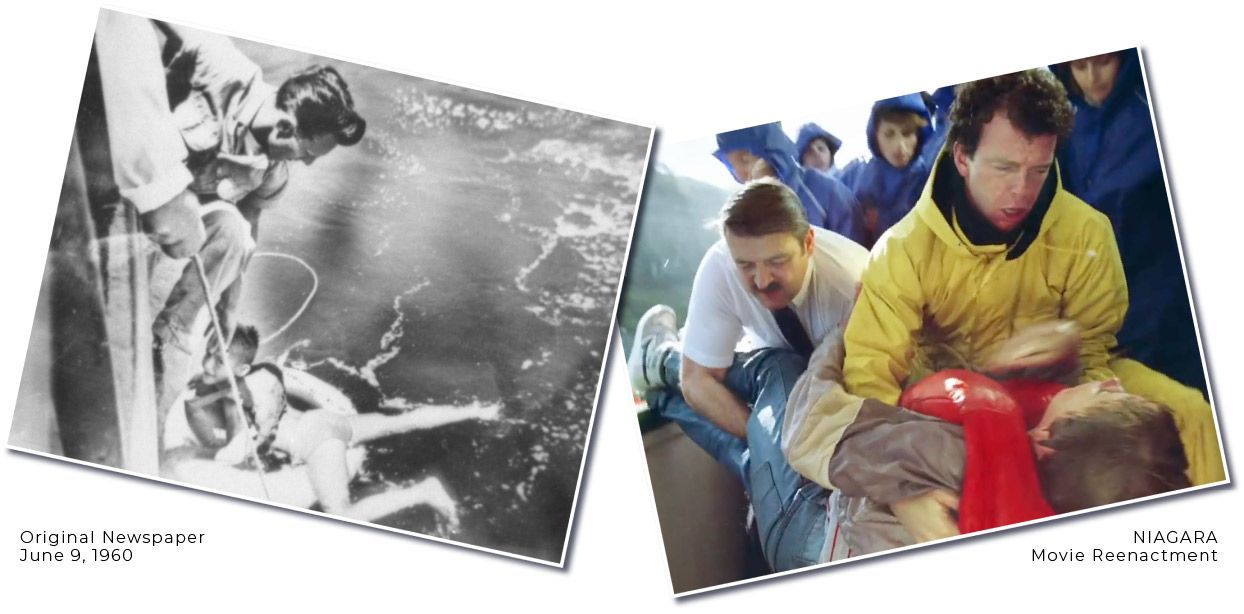DISCOVER THE
MAGIC OF NIAGARA
ON THE BIG SCREEN
Plunge into the magic of Niagara Falls on the big screen and discover
the history that goes deeper than the formation of the falls. Watch the Maid of
the Mist take a trip to lake Ontario, be the first person to go over the falls in
a barrel, and take the scenic route over the falls on a high-wire.
Discover the history of the falls.
New Paragraph
EXPLORE THE STORIES OF THE FALLS
Experience the magic of cinema that helped recreate the stories of the daredevils who dared to see Niagara Falls as something to be conquered. Plunge over the falls with Annie Edson Taylor with her cat in a barrel, take a bumpy ride to Lake Ontario on the Maid of the Mist with Captain Joel Robinson, and walk the high-wire round trip, with Charles Blondin. The Niagara: Miracles, Myths & Magic Movie offers guests a window into Niagara Falls’ sensational true stories including the death defying daredevils that attempted to challenge the roaring and treacherous waters. In its new location, the theatre offers a comfortable, intimate and fully accessible setting to enjoy the film, available in multiple languages.

ANNIE EDSON TAYLOR, FIRST OVER THE FALLS
The first barrel to take the plunge started with a cat and ended with the story that inspired many daredevils to come. Annie Edson Taylor and her cat took the first plunge over Niagara Falls in 1901, hoping for fame and fortune.
Button
CAPTAIN JOEL ROBINSON, “MAID OF THE MIST”
Take the ride of a lifetime with Captain Joel Robinson as he captains the Maid of the Mist from Niagara Falls to Lake Ontario through the most perilous conditions of his career.
Button
Charles Blondin, Daredevil of Niagara
Gather with the other spectators as Charles Blondin became the first daredevil to walk across Niagara Falls. The French acrobat suspended a tightrope on each end of the falls and walked the 1,100 feet of the Niagara Gorge.
Button
Roger Woodward, Niagara Falls Miracle
A trip to Niagara Falls was more than the Woodward’s bargained for after their boat developed motor trouble, capsized into the river and all three were thrown into the upper rapids.
Button
LOCATED WITHIN WALKING DISTANCE TO THE FALLS, WE OFFER A UNIQUE MOVIE EXPERIENCE
THE FIRST STOP ON YOUR TRIP TO THE FALLS
We combine education and entertainment in one film, showcasing the Falls and many awe-inspiring stories over its storied history. Convenient and accessible, this wildly informative and entertaining movie is your absolute first stop during your Niagara Falls visit.
For over 35 years, Niagara Adventure Theatre, formerly known as IMAX Niagara, has engaged visitors and enriched their Niagara experience through an informative and entertaining introduction to the mighty Falls. Free parking makes the Niagara Adventure Theatre a convenient first stop before exploring other nearby attractions. We are located a short walk from Clifton Hill, various additional attractions, dining, shopping and the Falls themselves.
The theatre uses a 4K resolution and 24,500 lumens projector to project onto a large 40′ wide by 20′ high screen. The projector delivers razor-sharp, high contrast digital images that brings Niagara’s human history to life.
TAKE THE PLUNGE AND DISCOVER THE MAGIC
Sit back, relax, and enjoy the edutainment of Niagara Falls. Plan your visit today!
SHOWTIMES
10:30am, 11:15am, 12:00pm, 12:45pm, 1:30pm, 2:15pm, 3:00pm, 3:45pm, 4:30pm
Wednesday April 23rd 4:30 pm only
CLOSED April 24th, 25th, 26th & 27th
CLOSED May 2, 3 & 4
CLOSED May 9, 10 & 11
Open 7 days a week
Adult (13+):
$12.95 + HST CDN at Box Office
Child (4 – 12):
$9.50 + HST CDN at Box Office
Children Under 4:
Free with paid adult
Tickets purchased online are valid for any future presentation of Niagara: Miracles, Myths & Magic. Reservations to a specific show are not required.
ADMISSION
CONTACT
Contact Theater staff during operating hours via telephone or email.
Give us a call or contact us using our online email form.
1-866-870-3002


